Did you know that your Filaments can absorb moisture and that this can cause all kinds of issues? Well, maybe you landed on this post because you are indeed having sudden quality issues while printing and you think that it may be due to the filament being wet.
In this article, I will go over the different filaments and how hygroscopic they are, which is to say, how much moisture they absorb and how fast they absorb it, what problems usually arise when printing with wet filament, and how to solve them by drying the filament.
So, without any further ado, let’s get started!
- Which Filaments absorb moisture?
- Issues of printing with wet filament
- How to tell if a filament has absorbed moisture?
- What filaments don't absorb moisture?
- How to keep Filament Dry?
- How to Dry wet filament
- How will moisture affect 3D printed parts?
- What's the average lifespan of a 3D filament Spool?
- Conclusion
- Check out our recommended products section
Which Filaments absorb moisture?
All FDM thermoplastic filaments absorb moisture to some extent, some more than others, but they are all hygroscopic. For example, PLA will swell up to 40 microns over a 150-hour exposure period to high levels of humidity, whereas Nylon, which is much more Hygroscopic, can reach it’s saturation point after only 24 hours of exposure.
Filament storage instructions should be taken seriously because if the filament you are using has absorbed any moisture, it will be visible in your prints. Moisture creates bubbling at the extrusion nozzle that results in uneven layers and eventually a print surface that resembles a teenagers’ pimple ridden face.
Essentially, you won’t get the smooth print surfaces you aimed for if the filaments you’re using are wet.
Different filament types absorb moisture at different rates, where some absorb a great deal of moisture while others like HIPS, absorb very little. Filaments that absorb moisture are labeled as hygroscopic, and below is a list of the different filament types placed in order from the most hygroscopic to the least.
Most Hygroscopic Filaments
- PVA: This filament is mostly used for printing supports and is generally used with dual extrusion printers; One extruder will be used to create the supports out of PVA while the other will print the 3D model. PVA is a great support filament as it is soluble in water and reduces post-production time as a result.
- Polycarbonate: Also known as PC, has great qualities like strength and heat resistance, but like other filaments, it absorbs moisture and must be treated with care and stored correctly to stop it from getting wet.
- Nylon: Despite being extremely heat- and impact resistant, Nylon has one huge drawback: It absorbs humidity at an extremely fast rate, since just two hours of exposure can make it unusable.
- PLA: When not in use, PLA must be kept in airtight containers. The filament is very popular because of its ease of use, but it doesn’t print all that well once it gets wet.
- ABS: ABS is a copolymer and is made up of three different monomers: Acrylonitrile, Butadiene, and Styrene. It has a slower moisture absorption rate than PLA but must still be properly stored in an airtight container.
- PETG: Storage of PETG filament is important as it is hygroscopic. Although it does absorb moisture, the rate is much slower than other filament types, but regardless of this, exposure to moisture should be prevented at all times.
- HIPS: Originally created as a support material, is being used more and more as the main printing filament. Of all filament types, HIPS is the least affected by moisture and some claim it is not hygroscopic.
Issues of printing with wet filament
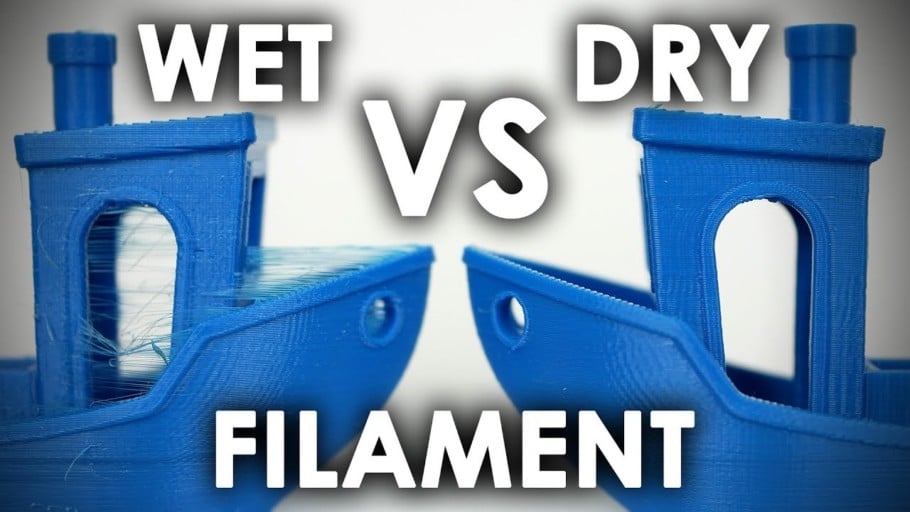
Printing with filament that has absorbed moisture creates a number of problems:
Not only can Filament swell when exposed to moisture and increase in diameter of 20-40 microns which can upset the print, but moisture saturated filament will cause extrusion delays, and then when extrusion is stopped, the filament will keep coming out of the nozzle. It may also cause the extruder to jam.
There may be some traces of steam coming from the extruder, and the filament will become stringy, which will ruin your print.
Essentially, printing with wet filament will cause prints to come out in inconsistent quality.
How to tell if a filament has absorbed moisture?
Moisture saturated filament will be more brittle on the spool and have less flex. You will hear cracking and popping sounds when the filament is being heated up in the extruder and you may even notice a bit of steam and bubbles at times.
The filament will take on an odd texture that is noticeable with blobs and stringing as it leaves the nozzle, resulting in uneven layers. These are the common signs of moisture problems, and if detected, it is advisable to stop the print process and dry the filament well before continuing.
How long does it take for filament to absorb moisture?
The time it takes for the filament to absorb moisture to its saturation point varies between the different filament types, since PLA and Nylon, for example, absorb moisture at drastically different rates. PLA will swell up to 40 microns over a 150-hour exposure period, whereas Nylon, which is much more Hygroscopic, can reach its saturation point after only 24 hours of exposure.
In a test conducted where PLA was mixed with a rubber compound (RS), the results show the decomposition and continued weakness of PLA with controlled moisture absorption.
The test indicated a gradual weakening of the test part’s tensile strength. The part was also placed under enzymatic decomposition conditions, and the tensile properties of the PLA/RS composite decreased rapidly.
What filaments don’t absorb moisture?
All thermoplastic filaments absorb moisture but at different rates, depending on the additives that are used. HIPS is said to be the filament that shows the most resistance to moisture absorption. Some claim it is not hygroscopic because no signs of the usual degradation related to moisture absorption have been officially recorded.
HIPS is a very strong and durable plastic and is similar in many ways to ABS, but it is rated as non-hygroscopic. HIPS is commonly used in toys and CD cases or boxes, however, the most common use for HIPS is as a support material for other filaments like ABS, since it’s easily dissolved in d-Limonene or orange oil.
How to keep Filament Dry?
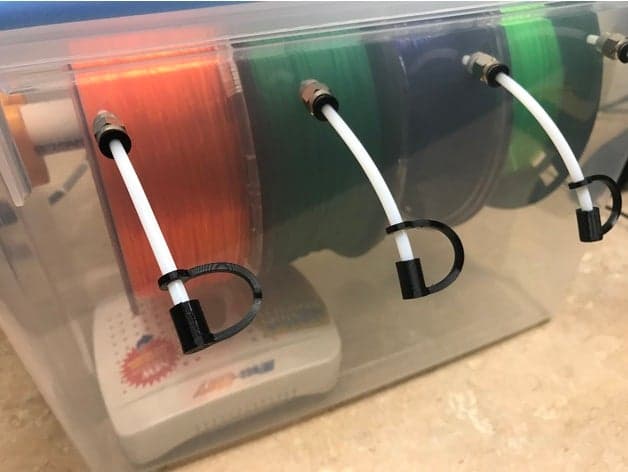
All filaments should be stored either in vacuum bags or in airtight containers with silica gel packets to absorb any moisture, since this is the only way of ensuring that the filament itself will be kept dry. Additionally, storing the filament right after printing will lower the exposure to humidity and increase its lifespan.
Filament can be dried, however, but keeping it in a moisture-free environment to begin with is your safest bet.
How to Dry wet filament
Wet filament can be dried by using a specialized device called filament dryer, or even a regular food dehydrator. However, for most people, the simplest and most effective way is to place the filament spool in the oven for at least four hours, and a maximum of eight hours, at a temperature 10C-20C below the glass transition temperature of the filament (40C-50C for PLA).
Here are the different methods in more detail:
With a Filament Dryer
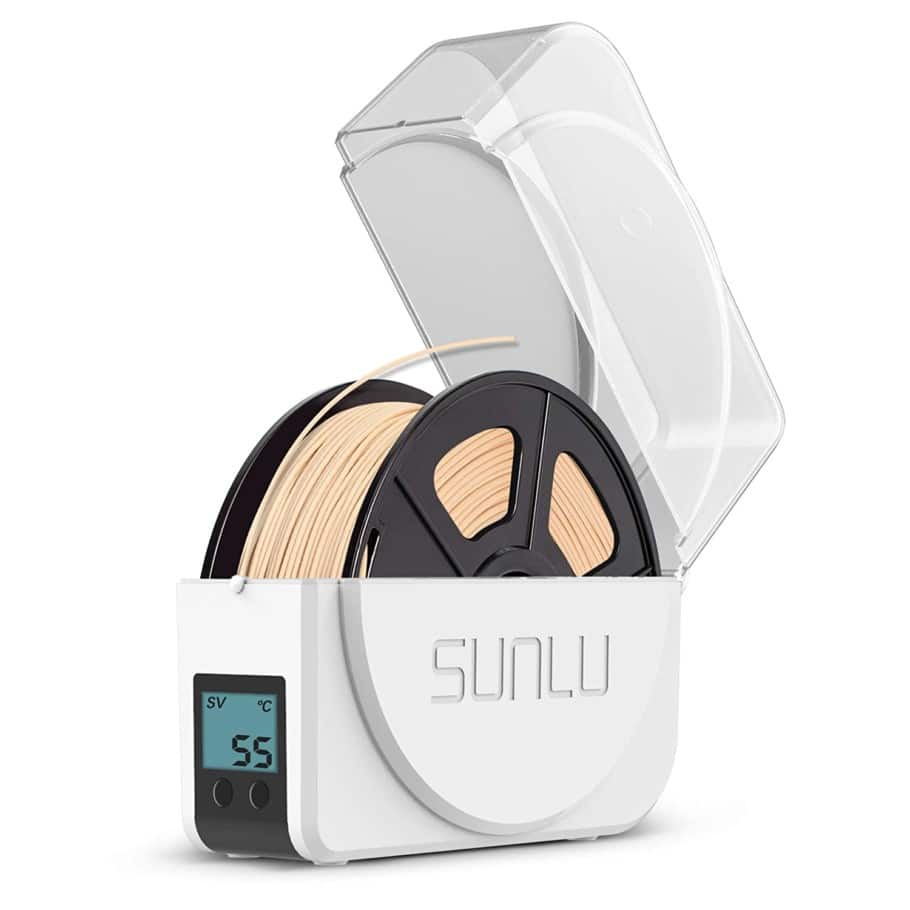
This is the best option to consider as it offers a controlled moisture-free environment that will ensure your filament will always be dry and ready to print.
A filament drying system is easy to operate and is relatively affordable. It not only dries the filament but also doubles up as a safe storage facility.
An example of time-saving on drying time is the Sunlu Dryer BOX, which is one of the most affordable yet best-reviewed filament dryers; Of course, these devices work great, but I don’t think that they are needed in most cases since they are a bit overkill.
In the Oven
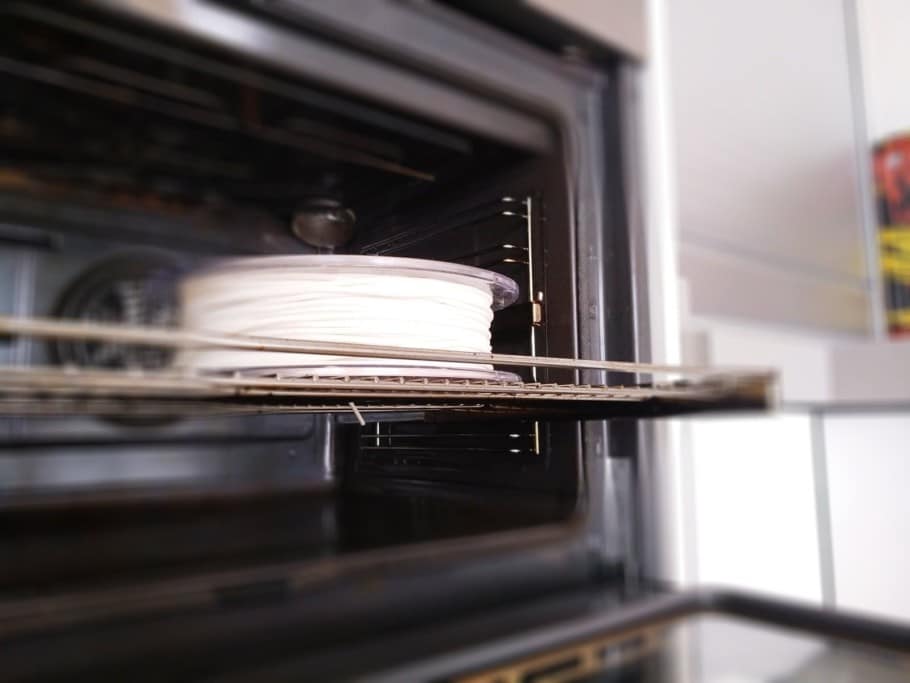
This is one of the most used methods by 3D printing enthusiasts for the simple fact that we all have an oven, and it does work to some extent.
However, there are some things to consider, mainly that filament should not be exposed to temperatures in the vicinity of its glass transition temperature, and the process will generally take between 4 and 8 hours to dry a PLA or Nylon spool in an electric oven.
Additionally, using a gas oven can work, but it’s much harder to control the temperature and they can also have spots that are much hotter than other, which may end up ruining your filament spool.
Food Dehydrator
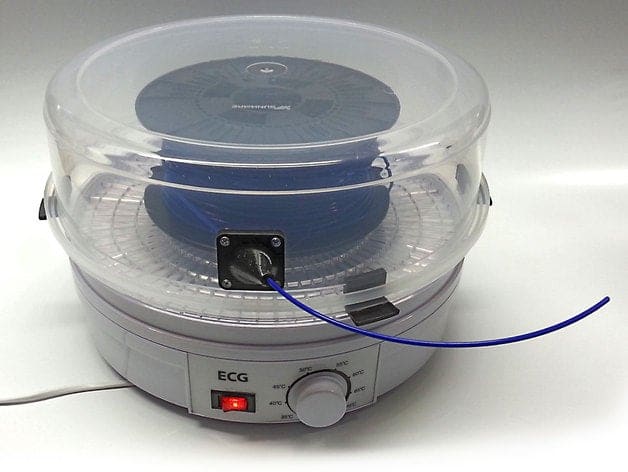
Using a food dehydrator is a safer option than using a conventional oven because it operates at a lower temperature, but still, it is not the ideal choice due to the added time required to dry the filament properly.
Will drying filament improve Print quality?
Filament that has absorbed moisture and that has been properly dried afterward will work just as well as brand new and completely dry filament. Moisture itself will affect the printing quality, but once it’s been removed from the filament, it will work as if it was never exposed to moisture.
How will moisture affect 3D printed parts?
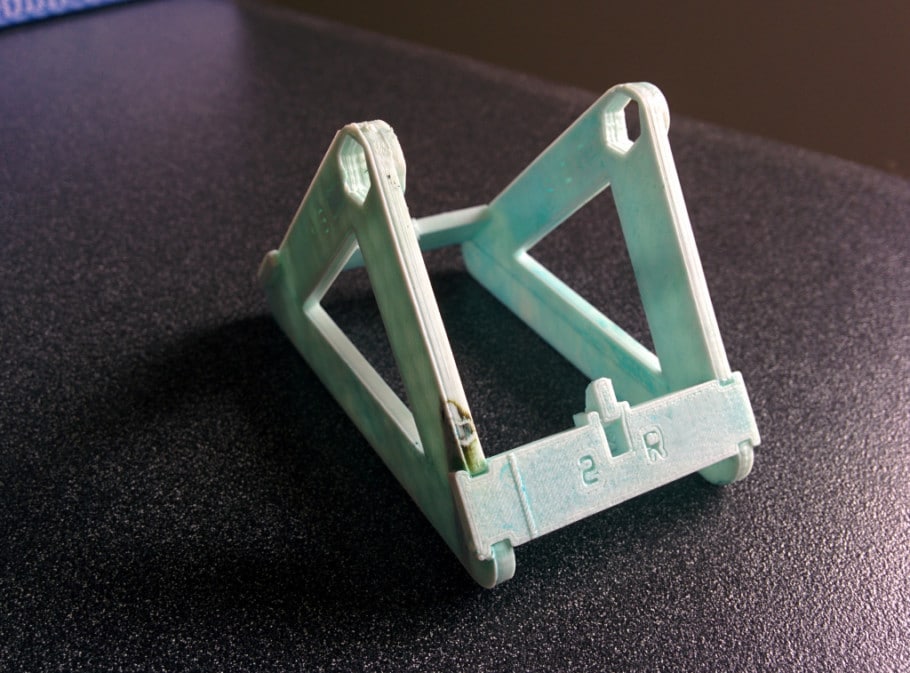
A completed 3D filament print will still be affected when being exposed to moisture, or submerged underwater.
An experiment was conducted using normal PLA with a 20% mix of Silicon Carbide (SiC), and the print was immersed in distilled water at 50 °C, which degraded in 58 days.
The exercise was repeated with a higher rate of SiC and the print lasted 140 days under the same conditions. The stability and tensile strength initially increased with adding SiC but began measuring a decline with higher amounts of SiC.
ABS was not immediately affected and retained its tensile strength; however, the stiffness of the print decreased during the ageing process while the failure strain increased. This indicated that the print was softened from being continuously exposed to water.
Now, study aside, when you read about what other makers say, they seem to have very different opinions and experiences; Some claim that their PLA will become brittle when left underwater in a matter of weeks, while some others experiences the complete opposite, where their prints felt brand new after even 3 years of being left underwater.
From my experience, there are many different conditions that need to be met for prints to become brittle when left in water, such as high enough water temperatures, being in direct sunlight (probably the biggest culprit), etc.
I wrote a post about this how water affects 3D printed parts, mainly PLA, so make sure to check it out.
What’s the average lifespan of a 3D filament Spool?
On average, 3D filament has a lifespan of 2-3 years in its original packaging, which is usually vacuum sealed, and if kept in the right conditions. PLA or ABS can last over a year if kept optimal conditions (low humidity, away from sunlight and stored at reasonably low temperatures). Ideal storage should have a humidity value of 10-13%.
If you want to learn more about the average lifespan of 3D filament spools and how long they actually last for printing, then check out this article I wrote.
Conclusion
Moisture can and will affect both filament and 3D printed parts, which is why it’s so important to store the filament properly in either vacuum sealed bags or in sealed airtight containers with silica gel packets.
If you forgot to store your filament and it got exposed to a lot of moisture, don’t fret! It can still be dried and reused without any issues, but you should try and keep it away from moisture as much as possible since sticking the filament spool in the over for 4-8 hours isn’t that fun.
I hope this information was useful!
Have a wonderful day!
Check out our recommended products section
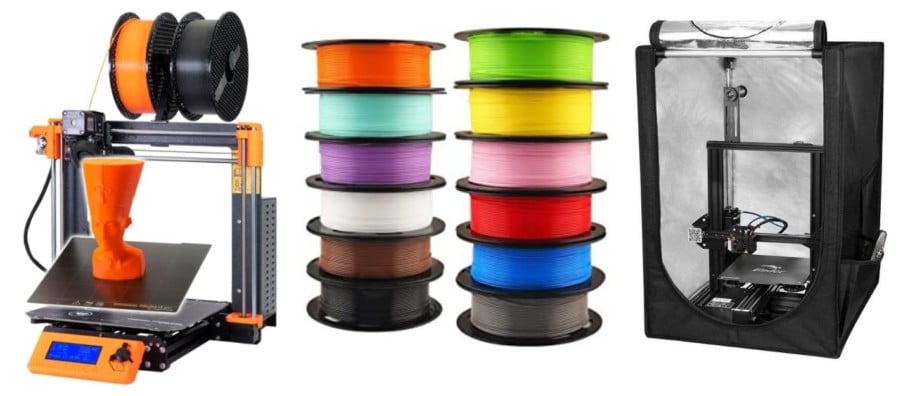
We created a recommended products section that will allow you to remove the guesswork and reduce the time spent researching what printer, filament, or upgrades to get, since we know that this can be a very daunting task and which generally leads to a lot of confusion.
We have selected just a handful of 3D printers that we consider to be good for beginners as well as intermediates, and even experts, making the decision easier, and the filaments, as well as the upgrades listed, were all tested by us and carefully selected, so you know that whichever one you choose will work as intended.
Error processing API data.
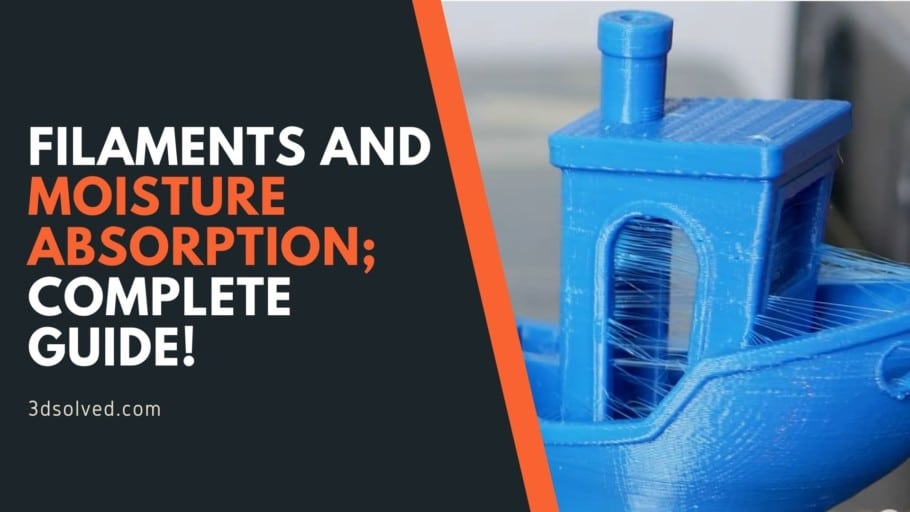
Are you sure polycarbonate is significantly hygroscopic?
The reason I ask, is that having looked on some materials websites, PC is less hygroscopic than PETG, which in turn is quite a lot less than PLA.